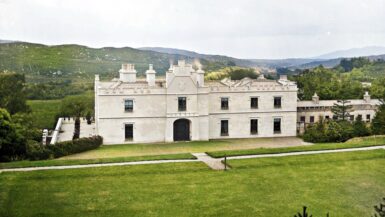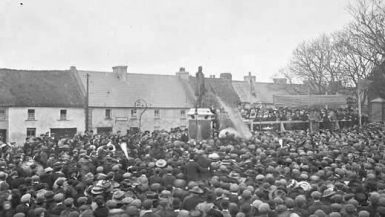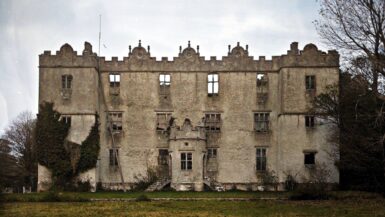ABBEYKNOCKMOY, a parish, in the union of Tuam, partly in the barony of Clare, but chiefly in
that of Tyaquin, county of Galway, and province of Connaught, 7 miles (S. E.) from Tuam, on the road
from Newtownbellew to Galway ; containing 2866 inhabitants. This place derives its name from the abbey
of Knockmoy, called by some writers Cnoc Mugha, signifying in the Irish language ” the Hill of Slaughter.”
and by others Monasterium de Colle Victoria. It was founded in 1189, by Cathal O’Connor, surnamed Croove Dearg, or “the Red Hand,” King of Connaught, in fulfilment of a vow made by him previously to a battle with the English forces under Almeric de St. Lawrence, in which he obtained the victory; and was occupied by Cistercian monks from the abbey of Boyle. In 1620, its site and extensive possessions were granted by James I. to Valentine Blake, Esq. ; they are now the property of Francis Blake Forster, Esq., of Ashfield. The parish comprises 12,386 1/4 statute acres, of which about 500 are bog. Near the summit of Knockroe hill is a subterraneous river, or stream, which, by an opening being made, now supplies the neighbourhood with water: near the top of this hill, also, are several limestone caverns. There ore large flour and oatmeal mills, called the Moyne mills. Moyne, a handsome mansion, is pleasantly situated in a fine demesne. Fairs are held on June 24th, Aug. 21st, and Nov. 1st. There is a constabulary police
station at Brooklodge , and petty sessions are held at Dereen. The parish is in the diocese of Tuam, and is a
rectory and vicarage, forming part of the union of Kilereran; the tithe rent-charge is £165. In the Roman
Catholic divisions Abbeyknockmoy is the head of a district, comprising also the parish of Monivae, and
containing a chapel in each, situated at Abbey and Rye Hill ; the former is a neat edifice with a steeple, recently erected on an eminence. There are some very interesting remains of the ancient abbey, which show it to have been extensive in its dimensions and elegant in its design: several capitals of pillars, beautifully sculptured, lie scattered about the churchyard , the chancel is vaulted with stone, and on the north wall is the tomb of the founder, ornamented with some rude paintings in fresco, which, from inscriptions on the walls, still legible, appear to be the work of the 13th century ; they are partly defaced, and are rapidly going to decay.
Extract from: Lewis – A Topographical Dictionary of Ireland





Fantastic stories